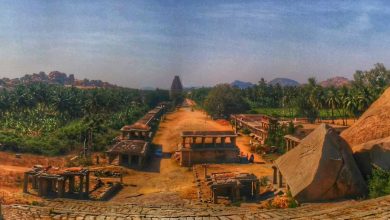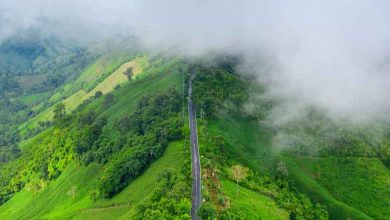Sanskrit was once the most spoken language in India and you will find that several scholars and intellects from the ancient era have written their books, journals and recollections in this beautiful language. It is also referred to as ‘Devbhasha’. Lord Brahma is said to have created Sanskrit and taught all celestial beings how to utter it. However, that is the story of the past. What’s surprising is that Sanskrit, in the 21st century, is the least spoken language in India. Hardly anyone uses the tongue or the text anymore. But, Mattur Village begs to differ. This is where you will see common men conversing in Sanskrit daily, including the priests to the farmers.
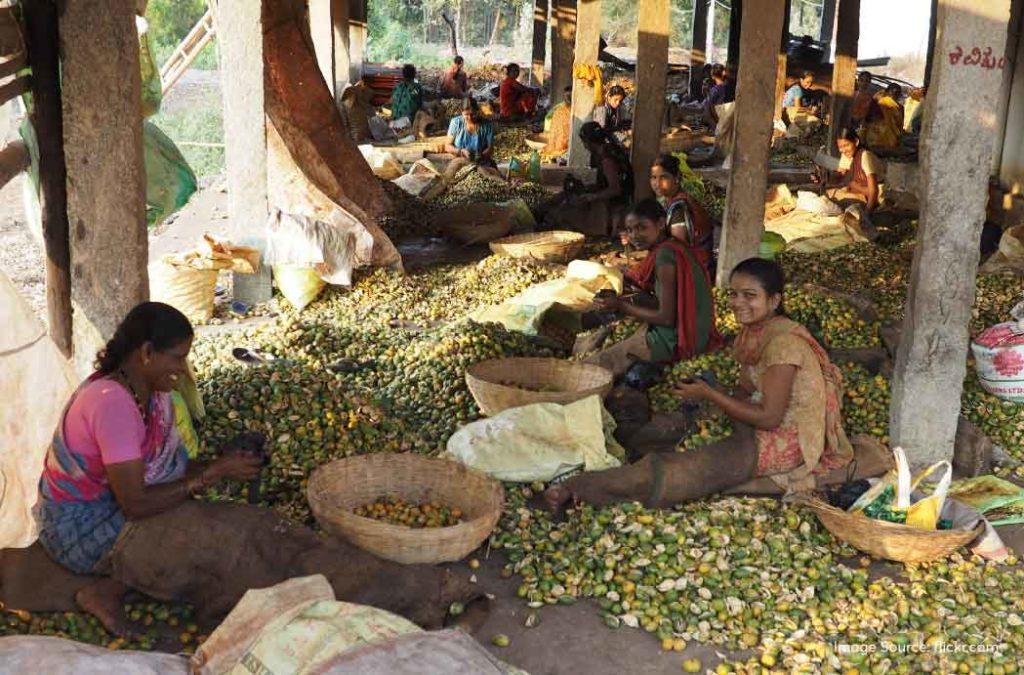
Here’s everything you need to know about Mattur Village, its origin, linguistic heritage, things to do and how to reach the hamlet.
The origin of Mattur Village
Mattur Village is on the banks of the Tunga River and offers just the right environment for those who crave peace, tranquillity and serenity. Centuries ago, the charming of Mattur’s nature attracted scholars and Brahmins of different communities to settle in the place. The ambience is perfect for indulging in spiritual activities and religious practices. The village was occupied by Brahmins who came from the Shimoga district and also the Sankethi Brahmins who migrated from Kerala. Afterwards, farmers, labourers, part-time workers and other people from the surrounding regions of Karnataka.
Slowly, a budding community and an entire civilisation were established on the banks of the Tunga River and Mattur village took shape. There are no historical records that give us the exact date or year when Mattur Village was established. However, the village likely came into existence around the time when the Brahmins were migrating from one place to another to promote Vedic learning and traditions.
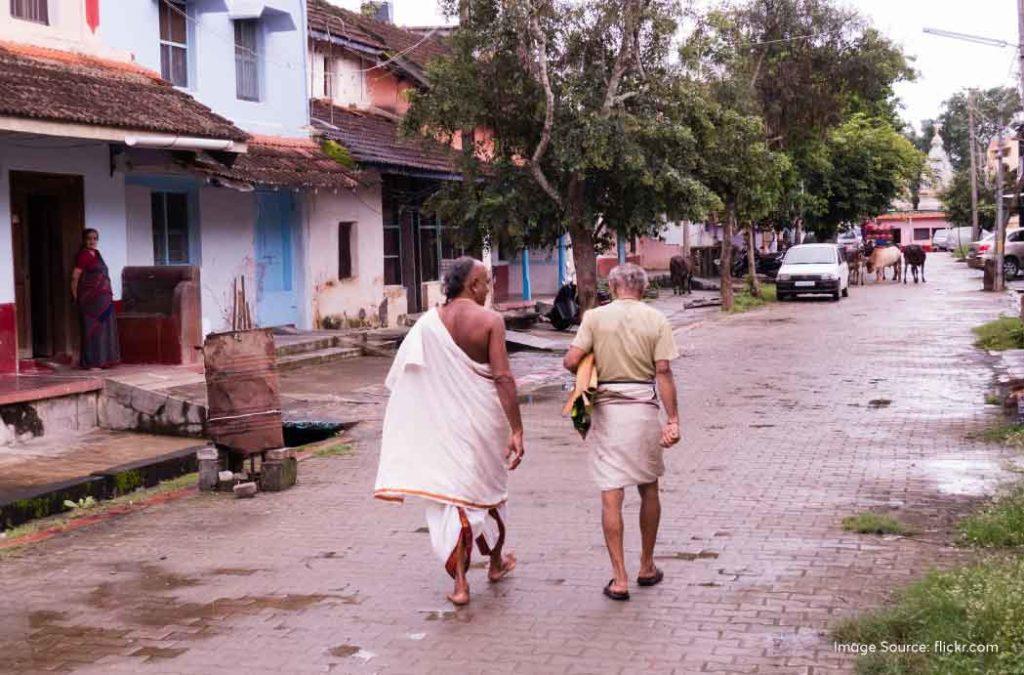
There are so many spectacular villages in India that will steal your heart! It won’t be wrong to say that Mattur Village is certainly one of them.
Sanskrit in Mattur Village
Before the 1980s, the people of Mattur Village spoke ‘Kannada’ which is the regional language of the Karnataka state. Also, the Sankethi Brahmins had a language of their own, a mix of Kannada, Malayalam, Tamil and Telugu. This was because of their frequent migration and relocation. They called their language ‘Sankethi’. But, Sankethi Brahmins were the ones who actively spoke in Sanskrit and also chanted the mantras and hymns. They studied the Vedas and religious scriptures in the language.
Over time, people began to believe that Sanskrit was a language that only the upper caste communities like the Brahmins could use. Because of this disparity, people criticised the language and associated it with discrimination. This changed when the priest of the Pejawar Mutt persuaded the villagers to learn Sanskrit irrespective of their societal status because the language had nothing to do with this hierarchy. It started off when people began learning, conversing and understanding the Sanskrit language for at least two hours a day. Within 10 days, everyone was able to converse or at least understand the language without any difficulty.
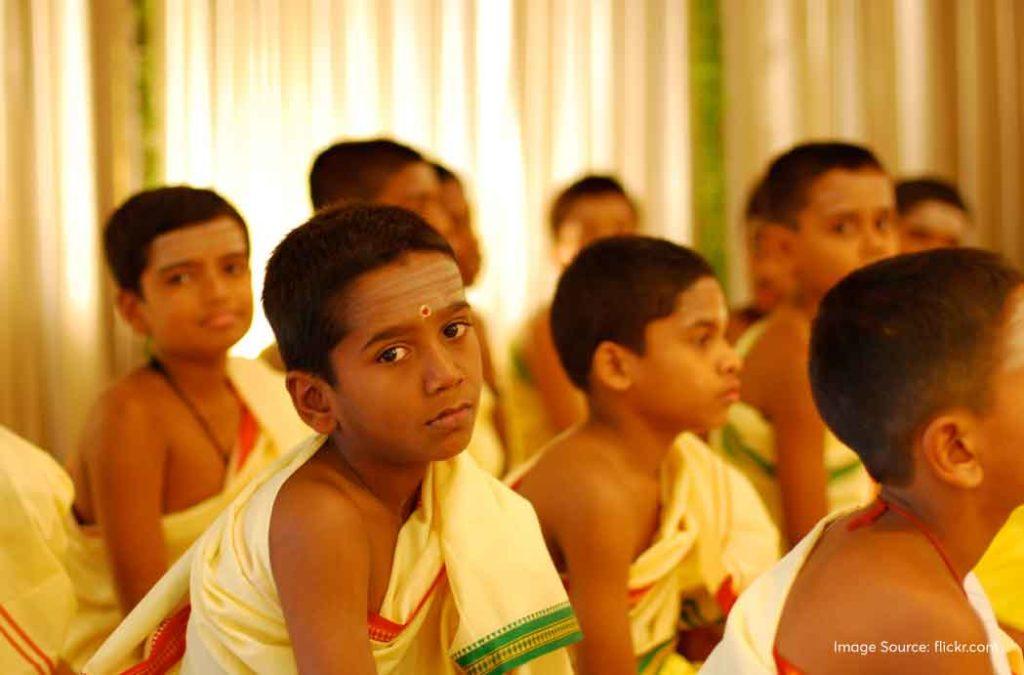
After the 1980s, schools, institutions and Sanskrit centres were established in Mattur village for the locals or anyone to come by and learn the language.
Sanskrit and academics in Mattur Village
The children in Mattur Village learn Sanskrit as their first language, English as their second language and any regional language as their third language. Usually, Kannada is the language that they opt for after Sanskrit and English. At the age of 10, they begin their learning of the Vedas and Puranas in the Sanskrit language. All the teachers who work in the educational institutions are well-versed in religious scriptures, traditional practices and Hindu culture. They bestow their knowledge among the young minds and they not only learn the language but also gain immense knowledge from the life lessons that the scriptures teach them. Subjects like Science and Mathematics are also included in the curriculum.
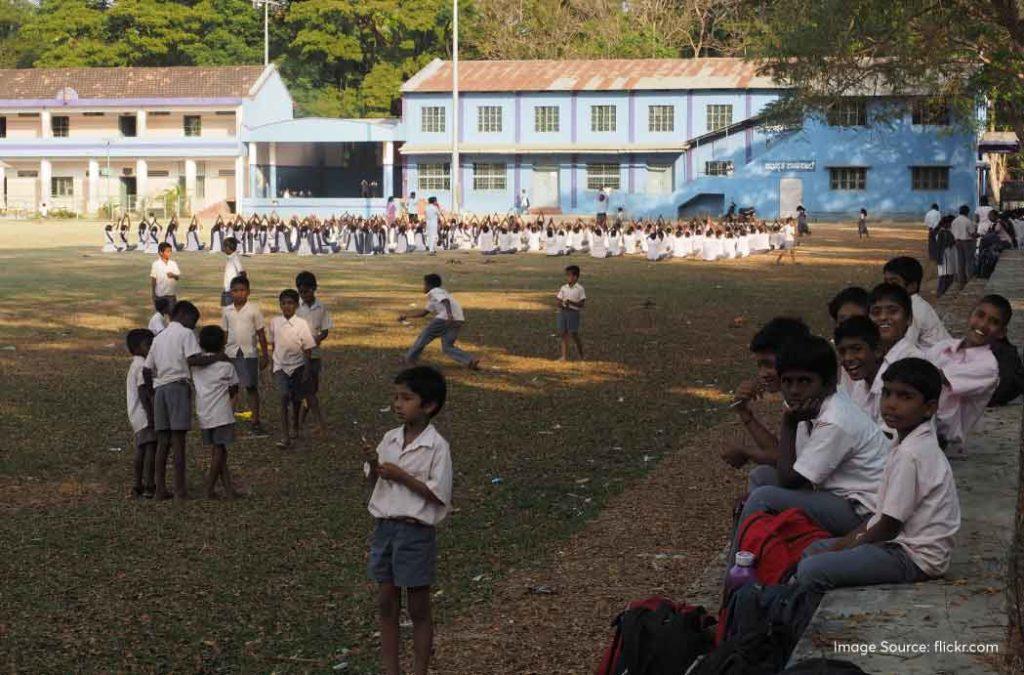
People who completed their education in Mattur Village have gone on to pursue higher education in the fields of science and mathematics. They also settled in well-paying IT and technology jobs. Subjects like Vedic mathematics helped them complete calculations and analyse complex problems quickly, without the help of the calculator. This is a trait that will greatly help an individual excel in fields like software, and IT among others.
So, the teachers from Mattur Village say that their curriculum is focussed on Sanskrit, yes, but it also prepares young minds to face the competition in the outer world and establish themselves as contributing citizens of the country. Brilliant, don’t you think?
The traditions in Mattur Village
Mattur Village is all about communal bonding and co-living. It won’t be wrong to say that it is a ‘Brahmin village’ seeing how most of the residents here come from that community. But, you will also find people from other occupations and casts residing safely in the hamlet. Most importantly, the crime rate in Mattur Village is very less because everyone here feels like the place is an extended community and harming others is frowned upon.
The people stay true to their cultural and religious traditions. The Brahmin households have several IT engineers, doctors and youngsters who have established themselves in prestigious positions in the government. However, they still make time to indulge in festive activities and stay true to their roots.
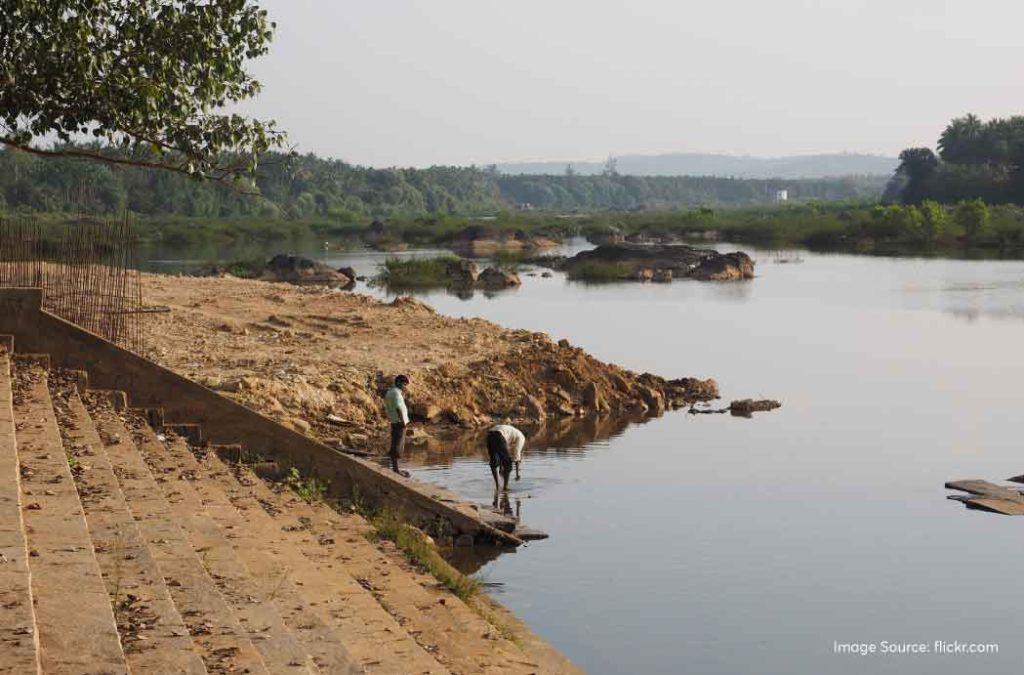
While this is great and appreciable, there are certain aspects of the village that the young residents wish to change. For instance, marrying out of the community.
If a young man or woman here marries someone from outside the community, that becomes a point of debate, so much so that their family will be ousted from the community and everyone would break ties with them. Well, it would take some time for this practice to stop. The present generation is working toward the change! Or so some of the villagers say.
Things to do in Mattur Village
Witness the Agnihotras
Havans are a very important part of the Hindu religious activities. During a Havan, a priest sits by a ‘Havan Kund’ within which fire will be lit. He then drops various offerings into the fire and these offerings are called the ‘Ahutis’. They can include ghee, flowers, leaves, sandalwood, kumkum, turmeric among many other things, depending upon the purpose of the Havan.
In Mattur Village, you will find priests and religious practitioners conducting Havans by the bank of River Tunga. These happen for wealth, prosperity and also well being of the community. Every day, you will find the Brahmins here performing Agnihotras near the river bank. Agnihotra is a type of Havan that is performed every day during sunrise and sunset.
So, whenever you visit Mattur village, go to the river banks during these times and you will be enchanted with the glory of these Havans. Also, it feels magical to see a group of people chant the Sanskrit mantras in unison.
Some people also prefer to come to the banks of the Tunga River to meditate and feel the positive energy of the place. While the priests perform the Agnihotras, you can sit down on the steps, close your eyes and immerse yourself in the melody of the Sanskrit language.
People who are fond of meditation should also explore the Vipassana Meditation Centres in the country that are known for offering the best atmosphere for you to find the connection between your mind and body.
Seek blessings at the Temples
There are a few temples that you can visit during your trip to Mattur Village. These are the epicentres of the Vedic rituals and festive celebrations. You will find Havana, poojas, rituals and hymn-singing sessions happening every day here. There are four prominent temples that you can explore on your trip.
The Narasimha temple is dedicated to Lord Vishnu who appears as Lord Narasimha here, one who is part lion and part man. He is the God who bestows you with protection and courage. He is known to ward off negative energy.
The Rama temple is home to Lord Rama, his wife and consort, Goddess Sita and his brother Lord Lakshmana. You will also find Lord Hanuman here, the devotee of Lord Rama and a deity himself. Prayers and Aaradhanas happen here regularly.
If you have a habit of visiting pilgrimage sites across India, then you must definitely pay a visit to Ayodhya Ram Temple in Uttar Pradesh.
The Hanuman Temple is another great place to go where you will see the idol of Lord Hanuman covered in vermillion. Aartis, Archanas and hymn-singing sessions in the Sanskrit language happen here every day.
Lastly, you can seek blessings from the Shiva temple. During Mahashivratri, the temple premises are lit up beautifully and Sanskrit chants, songs and the strothas of Lord Shiva are sung all through the night.
The temple might not be as big as those that house the 12 Jyotirlingas of Lord Shiva, however, it still is one of the main temples that people visit in Karnataka state.
Visit the Gurukuls
Gurukuls are the home schools in Mattur Village where the children learn the Vedas and get educated in the language of Sanskrit. These are traditional houses which also have small libraries with scriptures, journals and books written in Sanskrit. They are all related to the Hindu Vedas and Puranas. Children who come here leave their footwear outside, dress up in traditional dhotis and read out the Sanskrit Vedas under the guidance of a teacher.
When you visit the Gurukuls, remember to wear modest clothing that covers your arms and legs. Also, remember to leave your footwear outside Gurukul and enter barefoot.
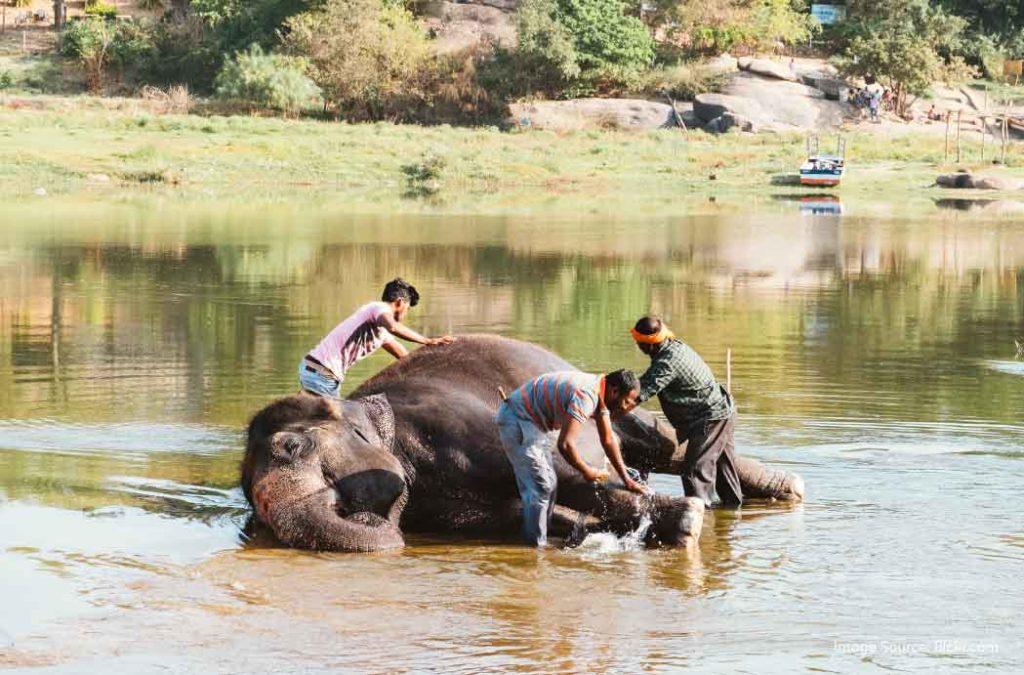
Relax at the Mattur Lake
The Mattur Lake is a small water body that is close to the Mattur Village. It is surrounded by impressive green trees, has rocks where you can sit and the atmosphere is calm and pleasant. You will find birds perching on the trees, flying over the water and chirping to their heart’s desire. Though no commercial activities are happening here, it is a great place for self-contemplation.
Spend time at Sakrebailu Elephant Camp
You can spend a day at the Sakrebailu Elephant Camp where you will find the majestic elephants in their natural habitat. During the early hours of the day, you can see how their caretakers wash and scrub the elephants followed by the sanitisation of their living space. Also, you can take part in activities like feeding the elephants. The caretakers will take you on a guided tour and show you how they take care of the elephants and cater to their needs. It’s a great place that wildlife photographers will come to love too!
How to reach Mattur Village?
You must reach Mangalore first and head to Mattur Village. The distance between the two places is close to 200 kms. So, we suggest that you check into hotels in Mangalore, relax and then travel toward Mattur Village.
By Air
The Mangalore airport is the closest to Mattur Village. It is well connected with other major Indian cities and you can reach the place within 2 hours from any city in India. Once you land here, you can take private transport and public buses or hire a cab/taxi to reach Mattur Village.
By Rail
Most trains travel from the major Karnataka states and districts to reach Shimoga. You can reach Shimoga railway station first and easily find buses or auto rickshaws that will take you to Mattur Village.
By Road
People travelling by road can reach Mangalore first and then head towards Shimoga on NH169. Then you will take a detour midway to travel on NH69 for a while and then take the service road to reach Mattur village. People coming from any state other than Karnataka can reach Mangalore first and then head towards Mattur.
When you are travelling by road, you will notice that the Agumbe village, known for being the rainiest place in south India, also falls along the way to Mattur Village. We strongly recommend that you explore that place as well.
Spending time at Mattur Village is a rewarding experience because you will get to see how the locals stay true to their ancient roots. You will sense joy and peace when you visit the hamlet. Also, you can learn some basic Sanskrit phrases to interact with the locals and that will definitely prove to be the highlight of your visit!
